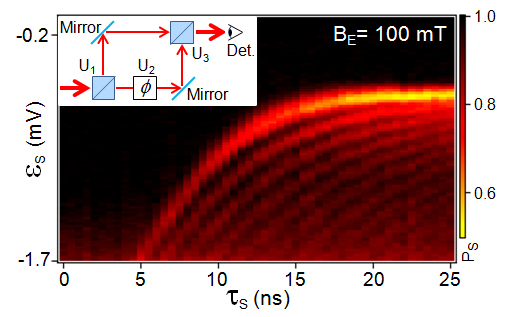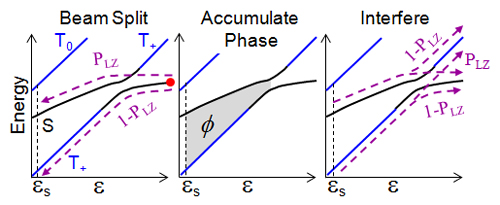A single electron spin in an external magnetic field forms a two-level system that can be used to create a spin qubit. However, achieving fast single spin rotations, as would be required to control a spin qubit, is a major challenge. It is difficult to drive spin rotations on timescales that are faster than the spin dephasing time and to individually address a single spin on the nanometer scale. We have developed a new method for quantum control of single spins that does not involve conventional electron spin resonance (ESR). In analogy with an optical beam splitter, we use an anticrossing in the energy level spectrum of our quantum dot “artificial atom” as a beam splitter for an incoming quantum state. The anti-crossing is used to prepare a superposition of singlet and triplet spin states, which then evolve according to the time-dependent Schrodinger equation. A return sweep through the anti-crossing results in quantum interference of the spin states. By changing the effective path length of one arm of our interferometer, we are able to achieve coherent rotations between a singlet state and a T+ triplet state. The rotations are nearly a factor of 100 faster than spin rotations achieved using conventional ESR and allow spins to be locally controlled using simple gate voltage pulses.


An anticrossing in the quantum dot energy level spectrum serves as a beam splitter for an incoming quantum state. Consecutive crossings through the beam splitter result in coherent single spin rotations on a nanosecond timescale.